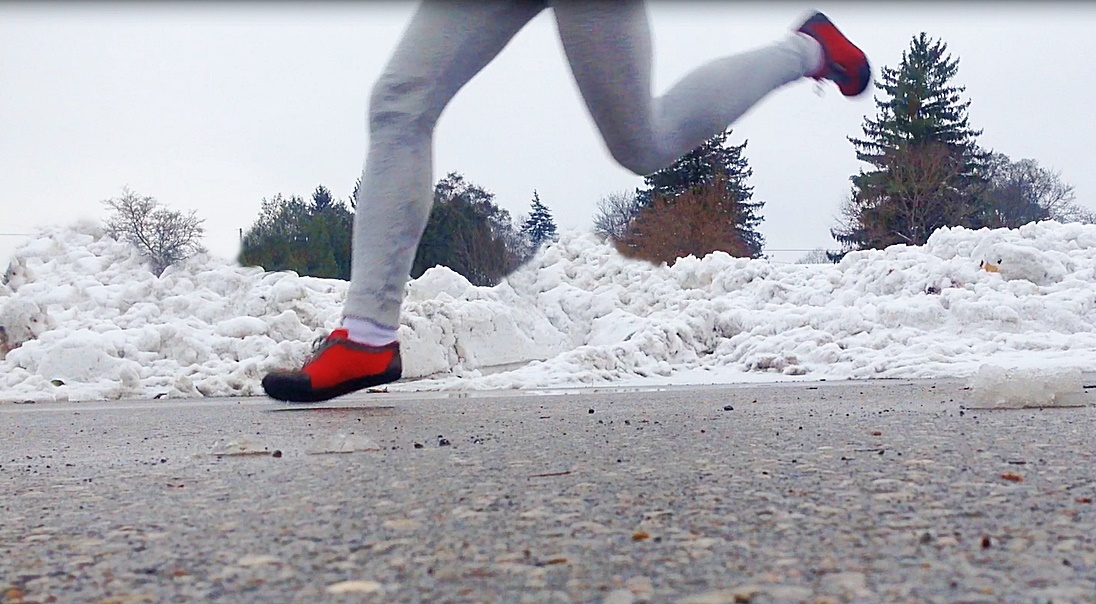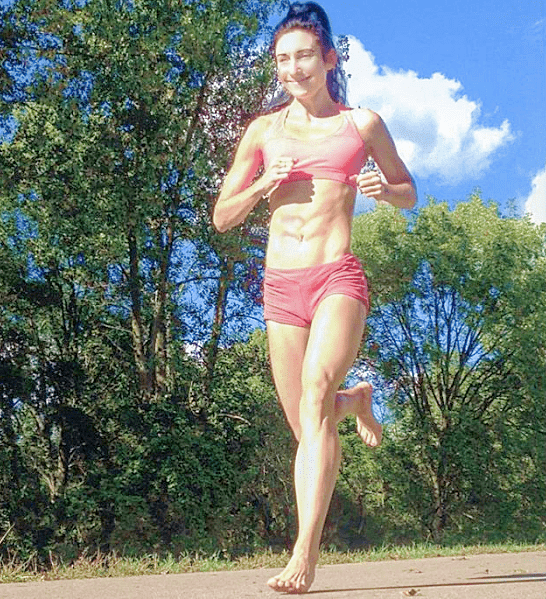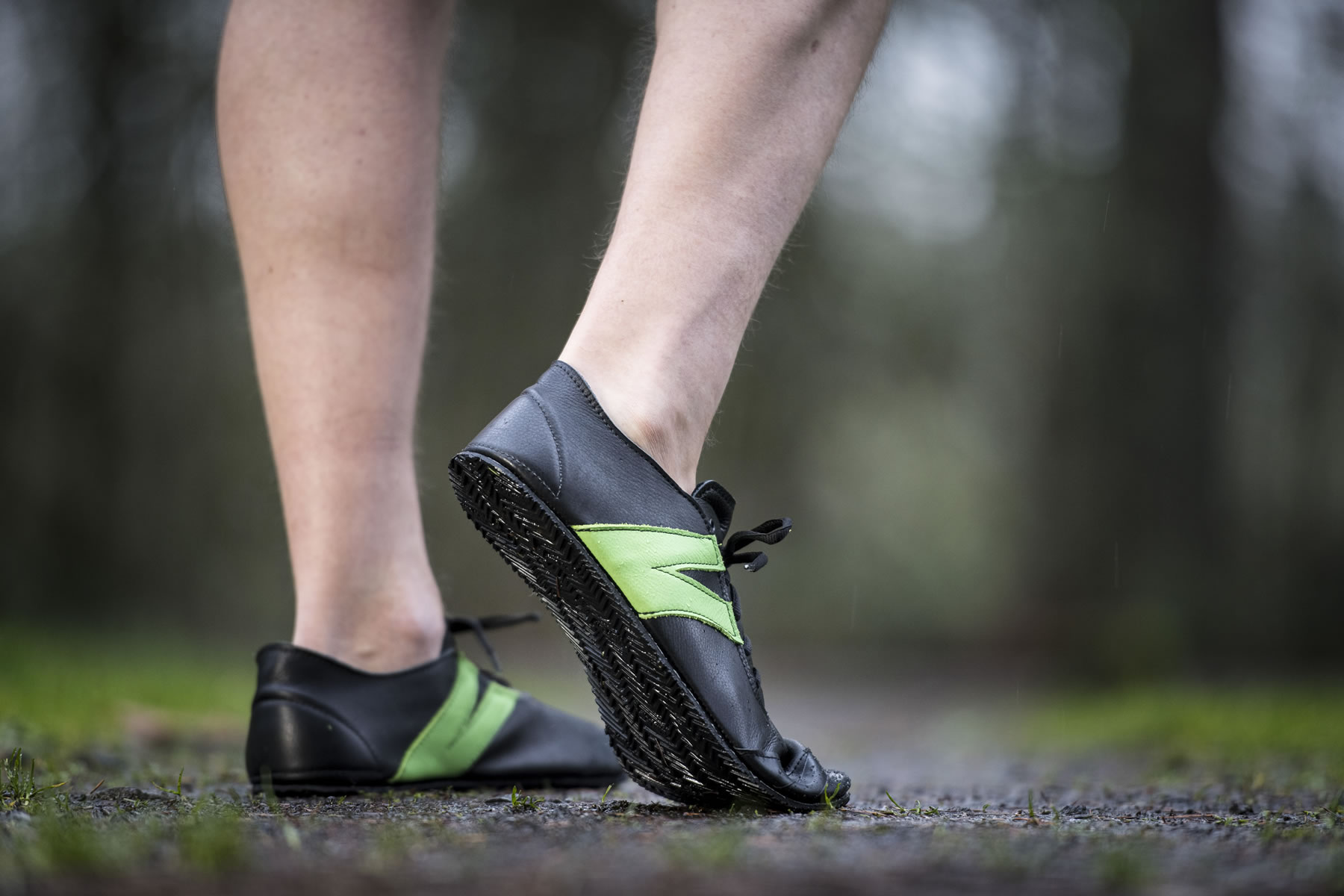In taking a hard look at the research on foot strike pattern and running economy, running on your forefoot makes you faster with greater, sustainable efficiency than heel strike running. This is because landing with a forefoot strike increases leg spring compression, which supplied more economic momentum with greater ease.


In forefoot running, leg spring compression was more optimized with speed, meaning the faster you run, the more your legs function as energy-saving springs.
- Similar to hopping, rebounding from a drop results in greater leg spring compression in forefoot running, meanwhile, as running velocity increases, so does leg spring compression as compared with heel strike running.

Consistent with the current research (references below article), reports in the journal, Human Movement Science, revealed greater leg spring compression increased elastic energy storage in the lower leg during the loading phase of stance (This is another energetic phenomena that makes forefoot running more efficient than heel strike running).
More confirming data in the Journal of Electromyography and Kinesiology discovered the biomechanical advantages of greater leg spring compression included preventing the collapse of the lower leg, meanwhile energy return during the propulsive phase of forefoot running was more optimized.

How Exactly Does Forefoot Running Improve Spring Compression in the Leg?
Researchers have laid out a number of mechanisms in forefoot running that optimizes leg spring compression. One such mechanism is reduced stride length.
- Naturally, a shorter stride is automatically facilitated by forefoot striking whereby a shorter stride corresponds to greater leg spring compression and better running economy (McMahon and Cheng, 1990; Farley and Gonzalez, 1996; Derrick et al., 2000).
Even more optimistic, running barefoot (which naturally engages a forefoot strike landing) on natural, softer surfaces, such as grass was also found to optimize leg spring compression, thereby resulting in better running economy (Kerdock et al. 2015).
So, when it comes to saving energy in forefoot running, you need to actually run faster, which is why the most economical runners, like Eluid Kipchoge, the marathoner who broke the 2 hour barrier, uses a forefoot strike, along with the vast majority of record holders across ALL distances. They dont use a heel strike because of all these reasons!

References:
Butler et al. Lower extremity stiffness: implications for performance and injury. Clin Biomech, 2003; 18:511-17.
Farley, C.T., Blickhan, R., Saito, J., Taylor, C.R., 1991. Hopping frequency in humans: a test of how springs set stride frequency in bouncing gaits. J. Appl. Physiol. 71, 2127–2132.
Granata, K.P., Padua, D.A., Wilson, S.E., 2001. Gender differences in active musculoskeletal stiffness. Part II. Quantification of leg stiffness during functional hopping tasks. J. Electromyogr. Kinesiol. 12, 127–135.
Latash, M.L., Zatsiorsky, V.M., 1993. Joint stiffness: Myth or reality? Hum. Movement Sci. 12, 653–692.
McMahon, T.A., Cheng, G.C., 1990. The mechanics of running: how does stiffness couple with speed? J. Biomech. 23 (Suppl 1), 65–78.
If you’d like, you can support Run Forefoot and help keep it going by making a donation in any amount of your choosing:

Or, you can support Run Forefoot by shopping at the BEST Barefoot Shoe Brands, and be sure to bookmark these links 🙂
Lonowear: https://lonowear.com/?ref=cedsholh
Saguaro: https://www.saguaro.com/?ref=9bVA8fEkmDvB-I
Vibram FiveFingers: https://www.anrdoezrs.net/click-7600968-11372648
Vivobarefoot: https://amzn.to/3vycQOY
Be Lenka: https://www.tkqlhce.com/click-7600968-13947200
Xero Shoes: https://xeroshoes.com/go/Run_Forefoot
Iguaneye: https://www.iguaneye.com/?ref=8tfXVc92
Soft Star Shoes: https://shrsl.com/3mp1b
Wilding Shoes: https://bit.ly/3lIygQP
Bretta Riches
BSc Neurobiology; MSc Biomechanics candidate, ultra minimalist runner & founder of RunForefoot. I was a heel striker, always injured. I was inspired by the great Tirunesh Dibaba to try forefoot running. Now, I'm injury free. This is why I launched Run Forefoot, to advocate the health & performance benefits of forefoot running and to raise awareness on the dangers of heel striking, because the world needs to know.
Latest posts by Bretta Riches (see all)
- Can You Run In Barefoot Shoes? Yes, But DON’T Heel Strike! - 21/07/2024
- Why Cushioned Running Shoes Are Really Bad for Your Feet - 19/07/2024
- Do Cushioned Running Shoes Cause Injuries? - 17/07/2024
